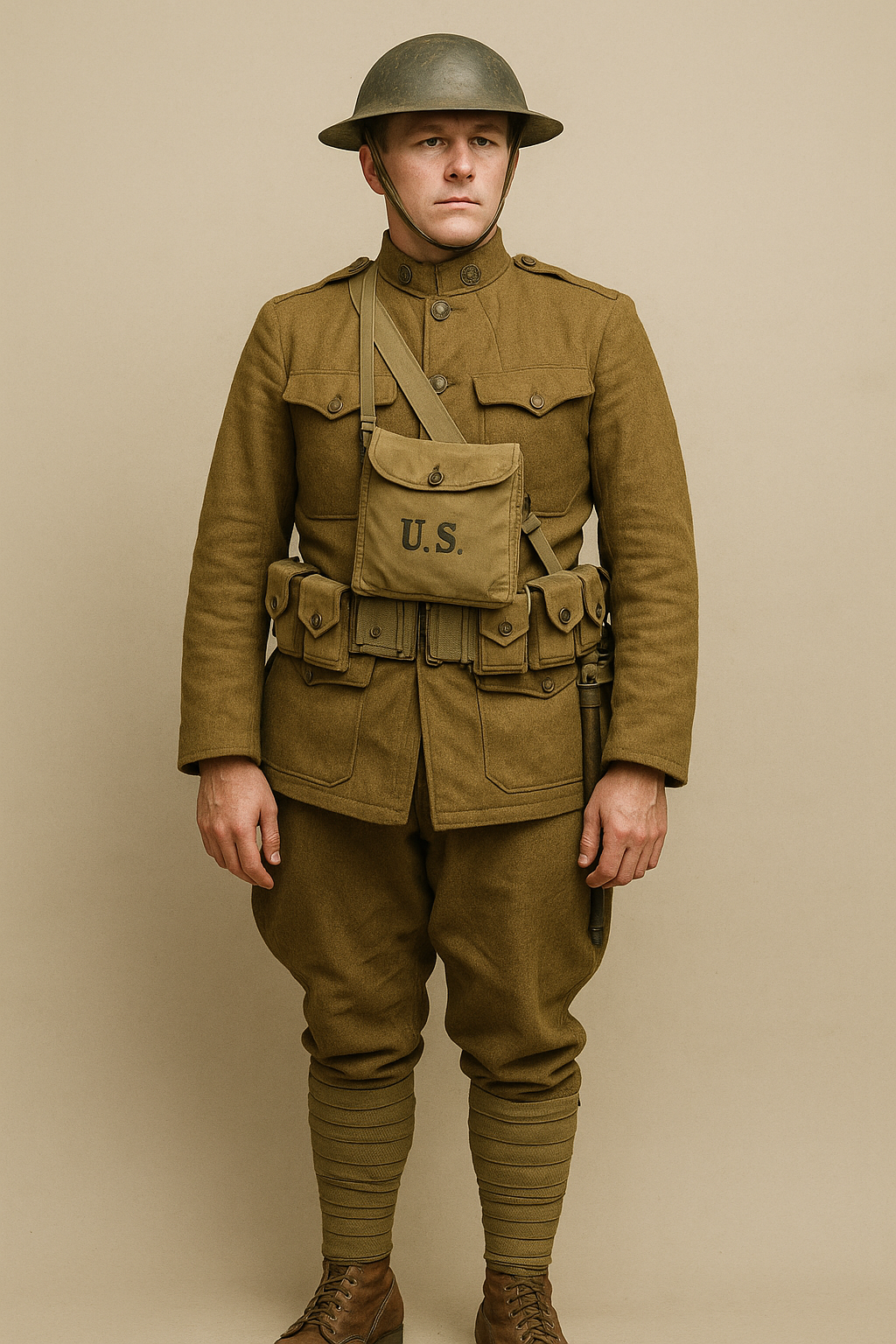
WW1 American Uniform: A Complete Beginner’s Guide to Gear, History & Collecting
Published on Sep 20, 2025
Introduction: Did You Know This Surprising Fact About WW1 Uniforms?
Did you know that over 4.7 million American soldiers were mobilized in World War I, each wearing variations of the now-iconic WW1 American uniform?
Whether you’re a military history enthusiast, a re-enactor, or just fascinated by wartime equipment, understanding the United States Army dress uniforms of World War 1 offers incredible insight into both the battlefield and the home front. But there's more than just history—collecting and identifying authentic uniforms is a growing trend today.
In this guide, you'll learn:
- What made the WW1 American uniform unique
- How it evolved into WW2 and Korean War uniforms
- Actionable steps for collecting or replicating it
- Pitfalls to avoid
- Where the trends are headed in 2025
The Origins and Design of the WW1 American Uniform
The WW1 American uniform was both functional and symbolic. Influenced by both British and French designs, it adapted quickly to trench warfare conditions and rapidly changing military needs.
Key Components of the WW1 American Uniform
Here’s a breakdown of what the standard U.S. soldier wore in the Great War:
- Tunic (M1917 wool service coat): Four-pocket, olive drab wool coat with brass buttons and a stand-up collar.
- Trousers (Breeches): Tight at the calves, with puttees (cloth wraps) or leather gaiters.
- Helmet (M1917 "Doughboy" Helmet): Steel, shallow-brimmed helmet derived from the British Brodie design.
- Boots (Trench boots or “Pershing boots”): Heavy leather boots designed to endure harsh trench environments.
- Web Gear: Cartridge belt, canteen, entrenching tool, and haversack.
- Gas Mask: Often carried in a satchel due to the threat of chemical warfare.
These details distinguish it from World War 2 uniforms and later Korean War uniforms, which featured more advanced materials and streamlined designs.
WW1 American Uniform vs. WW2 and Korean War Uniforms
Understanding the evolution of U.S. military uniforms can prevent confusion and help you accurately identify pieces. Here’s a quick comparison:
EraNotable Features
WW1 Wool tunics, breeches, puttees, Brodie helmet
WW2 M41/M43 field jackets, gaiters, improved helmets (M1)
Korean War Cold-weather gear, camouflage trials, standardized M1951 field jacket
Tip: Always check for manufacture dates and insignia. Korean War and WW2 uniforms are sometimes misidentified as WW1 in auctions or collections.
Actionable Steps to Start Collecting WW1 American Uniforms
Getting started with US WWI uniform collecting can be overwhelming. Follow these steps to simplify the process.
1. Start with Research
- Use trusted sources like the National WWI Museum or U.S. Army Quartermaster archives.
- Join online forums such as the WWI Militaria Collectors Group.
2. Buy Smart
- Look for complete sets or individual items with clear provenance.
- Start with smaller pieces like patches or belts before investing in full tunics.
3. Inspect Carefully
- Check for:
- Original tags and stamps
- Wear consistent with age
- Stitching patterns unique to WW1
4. Reproduction vs. Original
Reproductions are perfect for re-enactments, but don’t pay original prices for fakes.
Red flag: Sellers claiming “battlefield pickups” without DocumentationDocumentation.
Common Pitfalls in Collecting and Identifying WW1 American Uniforms
Even seasoned collectors fall into these traps:
1. Misidentifying Reproductions
Modern re-enactment gear is high quality—too high sometimes. Use UV lights to check stitching and fabrics. WW1 materials don’t glow.
2. Confusing WW1 with WW2 Gear
While similar in color, WW2 items often feature zippers, different insignias, and later manufacturing labels.
3. Overpaying for Incomplete Sets
Many new collectors overpay for coats or helmets without realizing they are mismatched or incomplete.
4. Ignoring DocumentationDocumentation
Always request:
- Provenance papers
- Photos of tags
- Seller history
Current Trends in WW1 Uniform Collecting and Enthusiasm (2025)
Military history is booming in the collectible and museum sectors. Here's what's trending now:
Digital Preservation & 3D Models
- Museums and enthusiasts are digitizing gear for AR/VR experiences.
- Great for educational tools and virtual exhibitions.
Reenactment & Public History
- WW1 reenactment events have seen a rise in participation, especially in Europe and North America.
- These events create demand for accurate reproductions of the United States Army dress uniforms of World War 1.
Crossover Collecting
- Collectors often blend WW1 gear with World War 2 uniforms and Korean War uniforms for timeline displays.
- This multi-era approach gives better context to uniform evolution.
Preservation Tips for Your WW1 American Uniform
Once you have authentic gear, take care of it like the museum-quality piece it is.
- Store in climate-controlled rooms to prevent wool degradation.
- Avoid plastic bags—use acid-free boxes.
- Keep items away from sunlight to prevent fading.
- Handle with cotton gloves to avoid oils transferring to the fabric.
Conclusion: The Legacy of the WW1 American Uniform Lives On
The WW1 American uniform is more than just wool and brass—it’s a symbol of courage, sacrifice, and a pivotal moment in U.S. military history. Whether you’re starting your collection, attending a reenactment, or preserving a family heirloom, taking the time to learn, source, and care for these artifacts ensures their legacy endures.Want to dive deeper? Explore your local military museum or join a WW1 collectors group online today.
